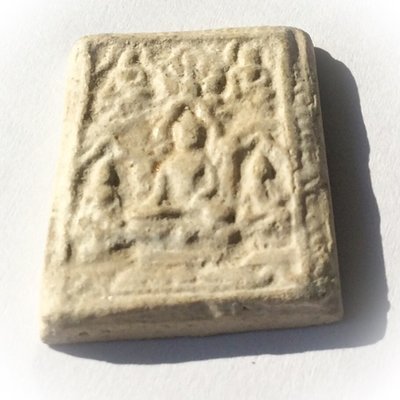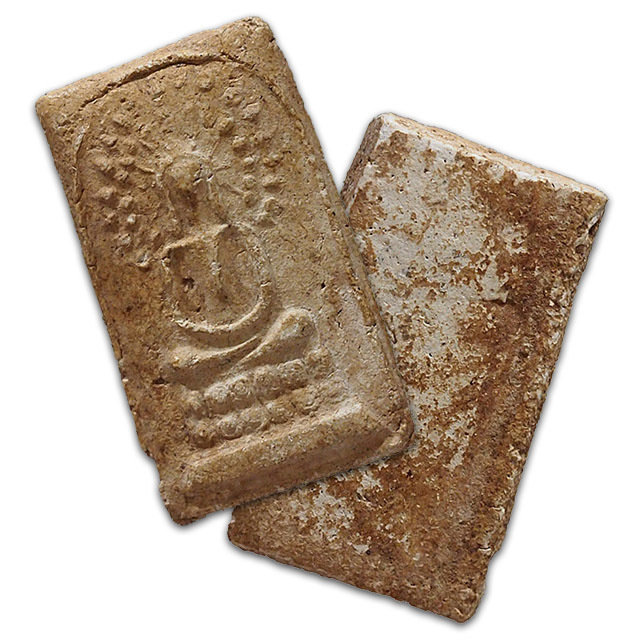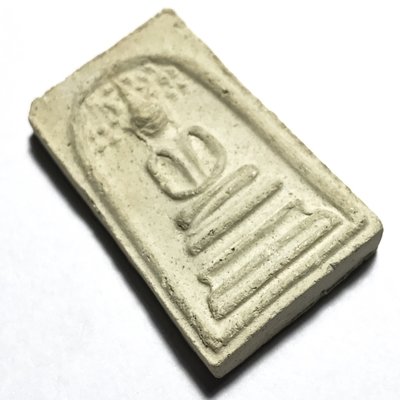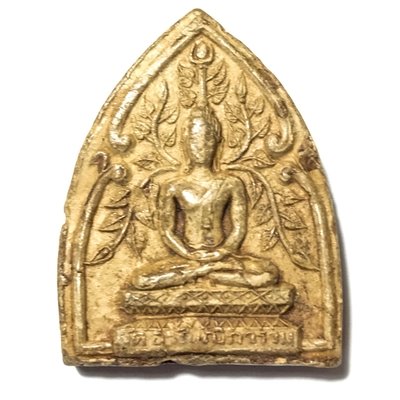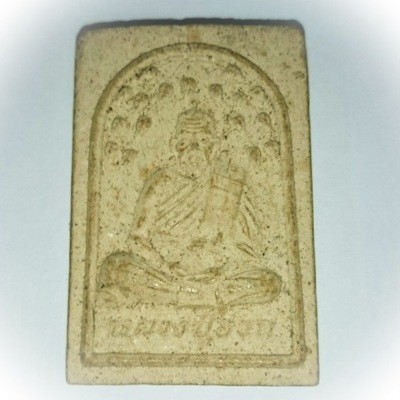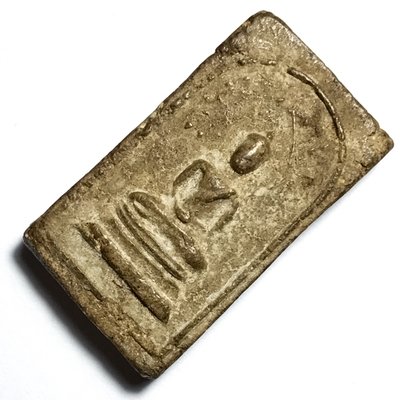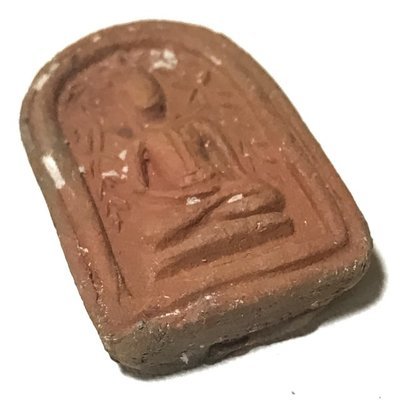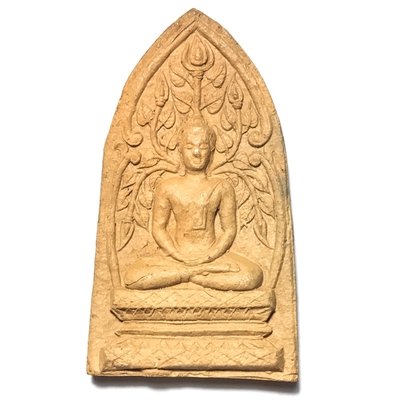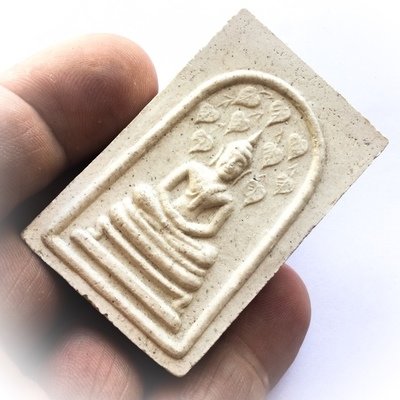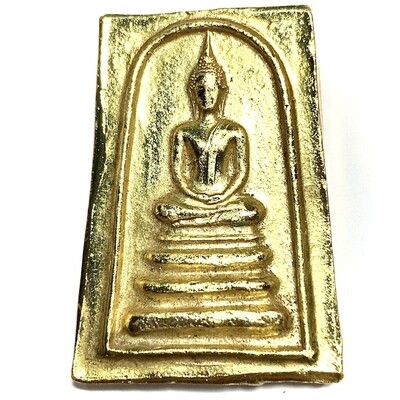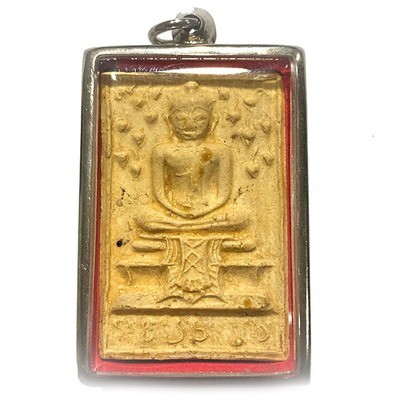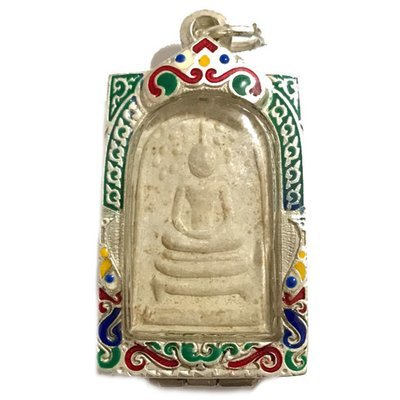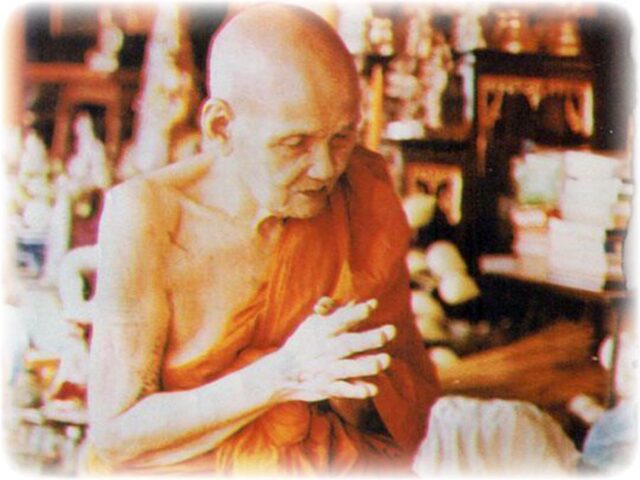
This list of Buddhist Guru Master monks will auto-update each time we add a new Master. Click each link in the list to view the amulets and read about each Guru Monk
- Ajarn Nong Wat Sai Khaw
- Luang Phu Yim Wat Nong Bua
- Luang Por An Wat Prayat
- Luang Por Daeng Wat Khao Bandai It
- Luang Por Glan Wat Prayat
- Luang Por Guay Chudtintaro Wat Kositaram
- Por Tan Nam Puttasaro Wat Don Sala
- Luang Phu Phueak Wat Ging Gaew
- Luang Phu Doo Wat Sakae
- Luang Por Chaeng Wat Bang Pang
- Luang Por Phaew – Wat Tanode Luang
- Luang Pu Seng Sopano Wat Kanlayanamit
- Luang Por Doon – Wat Buraparam
- Ajahn Chah Subhatto – Wat Nong Pha Pong
- Luang Phor Derm Phutthasaro of Wat Nong Pho
External Pages
- Luang Por Chuea Sugawanno (Wat Mai Bampen Bun)
- Luang Phu Nai – Wat Ban Jaeng (Ayuttaya)
- Luang Phu Rod (Wat Bang Nam Won)
- Luang Phu Kroo Ba Ban
- Luang Por Daeng Wat Khao Bandai It
- Luang Phor Noi Wat Dhamma Sala
- Luang Por Phang Jidtakudto
- Luang Phu Toop
- Luang Phu Yen
- Luang Por Parn Sunanto
- Luang Por Guay
- Luang Phor Sodh
- Luang Phor Raks (Wat Sutawat Vipassana)
- Luang Phor Kasem Khemago
- Luang Phu Kambu
- Luang Phor Chor
- Luang Phor Supot
- Luang Phor Simplii
- Luang Por Suang Apayo (Wat Chee Ba Khaw)
- Phor Tan Jao Khun Juea
- Luang Por Nok (Wat Sangkasi)
- Luang Por Lae Tidtappo (Wat Khao Song)
- Luang Por Hyord (Wat Gaew Jaroen)
- Luang Por Pring – Wat Bang Bakork
Pra Somdej Pim Prok Po Rasamee Long Kru Niyom 2500 BE - Luang Phu Hin Blessed with Luang Phu Nak Wat Rakang
A very rare Pra Niyom Class Preferred amulet of the Pantheon from Luang Phu Hin, Olden Days Master Monk of Wat Rakang Kositaram. Released in the year 2500 BE; the Pra Somdej Prok Po Rasamee Long Kru, in Nuea Pong Gao Wat Rakang
The amulet was blessed in 2500 BE during the year of celebrations of the 2500 years of Buddhism Ceremonies around Bangkok, and indeed the Nation, with Blessings from Luang Phu Hin, Luang Phu Nak and many other Masters of the Wat Rakang Kositaram Lineage.
The amulet was one of various models of amulets made from pieces of broken Pra Somdej Wat Rakang amulets, of Somdej Pra Puttajarn (Dto) Prohmrangsri. The broken pieces of Pra Somdej were gathered by both the great Luang Phu Nak (Wat Rakang Kositaram), and Luang Phu Hin (Wat Rakang Kositaram).
Luang Phu Nak was abbot at the time, and called Luang Phu Hin to assist him to complete the Shrineroom Construction, and to make amulets. Luang Phu HIn gathered a large number of Pra Somdej Wat Rakang Kositaram of the Great Somdej Pra Puttajarn (Dto) Prohmrangsri, for mixing in with Luang Phu Nak's already Grandiose Repository of Muan Sarn from the Great Master of Old.
The amulets of Luang Phu Hin have become very famous over the years with Singaporean Devotees, due to various cases of devotees who wore his amulets being involved in deadly accidents and surviving, as well as cases of stabbings which were unable to pierce the skin. The amulets of Luang Phu Hin are very highly sought after both for their Kong Grapan Chadtri Klaew Klaad Maha Lap powers, as well as by serious students of the Dtamra Pra Somdej Wat Rakang Kositaram.
They are considered an excellent study material for the pure content of broken pieces of old Pra Somdej Wat Rakang in the Muan Sarn Sacred Powders. This allows the student to study the true content and appearance of the Muan Sarn Clay, as a reference study to investigate the many subtle aspects of ancient Pra Somdej Wat Rakang.
This amulet is included in the Tamniab Wadthumongkol of both Luang Phu Hin, and that of Luang Phu Nak, because the devotees of each of these masters both count the amulet as being from their chosen Master. In truth, both Luang Phu Nak, and Luang Phu Hin were present in the Blessing Ceremony, and the amulets were more of a mutual collaboration, than being from any particular master of the two.
In the Pra Niyom Aficionado Societies, this amulet is attributed to Luang Phu Hin. The amulet can obviously be used by devotees of both Masters due to the fact that both gave their blessings, as well as by any devotee of Wat Rakang Kositaram, and Somdej Pra Puttajarn (Dto) Prohmrangsri
For foreigners perhaps the palace and the temple of the dawn and Wat Po may be the most famous, but for Thai people and for amulet aficionados, Wat Rakang Kositaram is of course, perhaps the top temple as far as amulets are concerned, due to the fame of the Pra Somdej Wat Rakang Kositaram of Somdej Pra Puttajarn (Dto) Prohmrangsri.
Luang Phu Nak, and Luang Phu Hin, as well as the Great Jao Khun Tiang of Wat Rakang Kositaram, were especially adept in the Wicha of making amulets according to the Dtamra of Somdej Pra Puttajarn (Dto) Prohmrangsri, and the mixing of Muan Sarn Clay, by method of making Yantra Powders, mixed with hordes of other secret ingredients.
he amulets of Luang Phu Hin, Luang Phu Nak, and of the Great Jao Khun Tiang, are all highly regarded for their Muan Sarn Sacred Powders content based on the Dtamra Somdej Pra Puttajarn (Dto) Prohmrangsri Wat Rakang Kositaram, and for their power of Maha Lap Kong Grapan Chadtri Klaew Klaad. All of these Masters are direct Lineage Masters of the Wicha Pra Somdej Wat Rakang Kositaram, and all resident monks of the temple, as well as being amongst the great abbots of Wat Rakang Kositaram.
His amulet trajectory began very early around 2505 BE, as he received Wicha from his Mentors Luang Phu Nak and Luang Phu Hin, and as a lineage continuance abbot and Wicha Holder of Wat Rakang Kositaram, is also an Eminent Member of the Gaeji Ajarn Master Lineage of this great Temple.
His amulets are very hard to find, especially this early edition Masterpiece, which is known to have passed Buddha Abhiseka in the year 2507 BE, with both of his Mentors, Luang Phu Nak, and Luang Phu Hin attending to assist in the empowerment. This amulet is one of the first made by Jao Khun Tiang from his very early Era, and is an immensely rare acquisition for aficionados and devotees of Wat Rakang Kositaram, and the amulets of this world famous sacred temple.
Use the Traditional Thai Buddhist Method for Bucha;
1. Chant Maha Namasakara (3 Times)
2. Chant the Trai Soranakom (3 Times)
3. Chant Kata Aaraatanaa Pra Krueang (3 Times)
Kata Maha Namasakara
Namo Dtat-Sa Pakawa-Dto Araha-Dto Sam-Maa Sam-Put-Dtat-Sa
Namo Dtat-Sa Pakawa-Dto Araha-Dto Sam-Maa Sam-Put-Dtat-Sa
Namo Dtat-Sa Pakawa-Dto Araha-Dto Sam-Maa Sam-Put-Dtat-Sa
Trai Soranakom
Puttang Cheewidtang Yaawa Nipaanang Saranang Kajchaami
Tammang Cheewidtang Yaawa Nipaanang Saranang Kajchaami
Sangkang Cheewidtang Yaawa Nipaanang Saranang Kajchaami
Tudtiyambpi Puttang Cheewidtang Yaawa Nipaanang Saranang Kajchaami
Tudtiyambpi Tammang Cheewidtang Yaawa Nipaanang Saranang Kajchaami
Tudtiyambpi Sangkang Cheewidtang Yaawa Nipaanang Saranang Kajchaami
Dtadtiyambpi Puttang Cheewidtang Yaawa Nipaanang Saranang Kajchaami
Dtadtiyambpi Tammang Cheewidtang Yaawa Nipaanang Saranang Kajchaami
Dtadtiyambpi Sangkang Cheewidtang Yaawa Nipaanang Saranang Kajchaami
Kata Aaraatana Pra Krueang
Puttang Aaraatanaanang
Tammang Aaraatanaanang
Sangkang Aaraatanaanang
Puttang Prasittimae
Tammang Prasittimae
Sangkang Prasittimae
